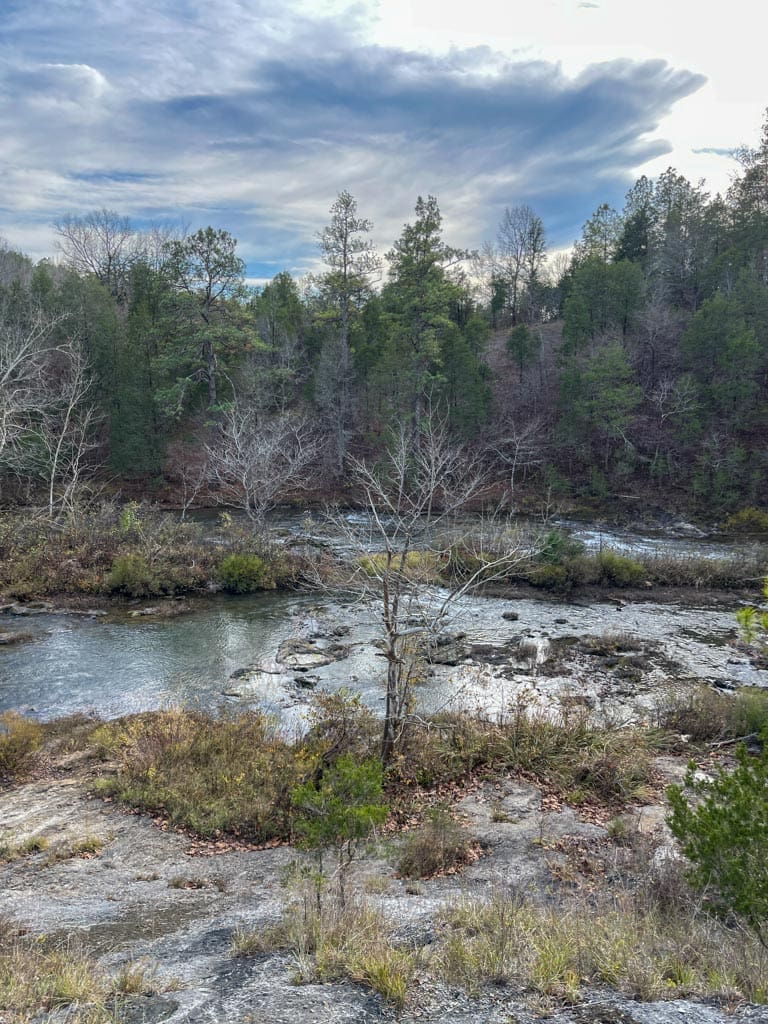This article represents the opinions of its author. The views expressed here are not necessarily representative of The Sunrise News staff as a whole.
Sweet home Alabama, a place where you can witness one of the greatest football rivalries in the U.S., where you can visit some of the nation’s most historical civil rights sites and a state that has one of the highest rates of biodiversity in the country.
Alabama comes in fourth place for species diversity in the United States, and first east of the Mississippi River. Although Alabama comes in fourth for total species diversity, we are ranked first for diversity of freshwater mussels, fishes, snails, crayfish and turtles. Referred to as the Amazon of the United States, Alabama’s location and geologic variation promotes its flourishing fauna.
With this stunning environmental diversity and variation in mind, it’s no wonder there seems to be an endless amount of hikes and, what I like to call “nature spots,” all over the state.
This would be a good time to introduce myself, and what I want from The Longleaf Hiker.
My name is Xander Swain, and I help contribute towards the Alabama Roundup. During the day, I work at the Alabama 4-H Center as an Environmental Educator. My job is to help educate and facilitate school groups and conference groups at the 4-H Center.
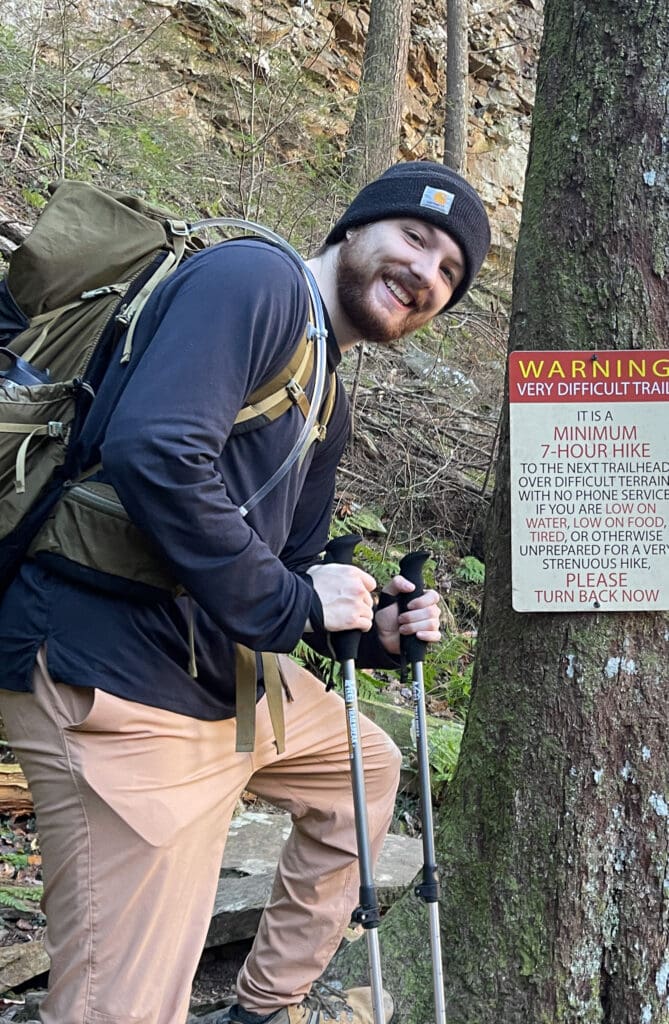
From reptiles and amphibians to water quality and ecology, I help educate people ranging from third graders to adults. I am also a recent college graduate, with degrees in sociology, political science and environmental studies. I love being in caves, climbing, kayaking, hiking, hanging out in a hammock, fishing and just about any other excuse to be outdoors.
Now why is that relevant? I just word vomited about myself, and why should you care? The reason is that in my short time writing and reading articles and columns, I’ve come to the belief that the person behind the screen matters. I don’t just want to show you that I know about the environment or biodiversity, or natural history. I want my passion to jump out from my words in hopes that you yourself may take the first step towards becoming enamored with the outdoors.
With this column series, I want to provide a place that you can visit, that you may or may not have heard of, and when you do visit, you bring with you a foundational knowledge that not only may make your time easier, but more enjoyable for yourself and anyone you may bring with you.
From my time working at 4-H, I’ve learned that, no matter the age, people crave learning. Not only do people want to know more about the natural world around them and their experiences or hobbies, they want to share that with others.
I cannot put into words the feeling when you tell a group of kids a fact about their natural home and you later overhear them repeating it to their friends or parents with a genuine fascination and desire to know more. It inspires me and has given me a confirmation that whatever I do later in life, it must involve education.
So to finish this long-winded introduction to my first entry, I want you to learn something with each article, and that if you do visit these places – which I hope you do – you can share with me the sheer wonder of our Alabamian Amazon.
Our first nature spot that I’ll be covering is the Kathy Stiles Freeland Bibb County Glades Preserve. Staying in theme with Alabama’s biodiversity, I chose the “most biologically diverse piece of land known in the state of Alabama,” according to the Nature Conservancy. While not exactly a full hiking trail, it’s an excellent beginner area for exploring the outdoors, and a place that even the most experienced outdoors persons can appreciate.
Kathy Stiles Freeland is part of the founding coalition, and the first executive director for the Ruffner Mountain Nature Center. She has also been part of the leadership of the Alabama chapter of the Nature Conservancy and has worked with the Birmingham Audubon Society. She was a critical part to starting the Birmingham nature movement.
The Glades are home to 61 rare plant species, eight of which have never been found elsewhere. One more plant species, the dwarf horse-nettle, was thought to be extinct in the wild and had not been spotted since 1837 until it was found in 1993 at the Glades. The rocky-shoal spider lily, or the Cahaba Lily, can also be spotted here. The Cahaba Lily is one of the more iconic plants in Alabama, but only blooms from May to June. Additionally, the Glades are home to several rare aquatic species like the round rocksnail and the goldline darter.
Traveling to the Glades
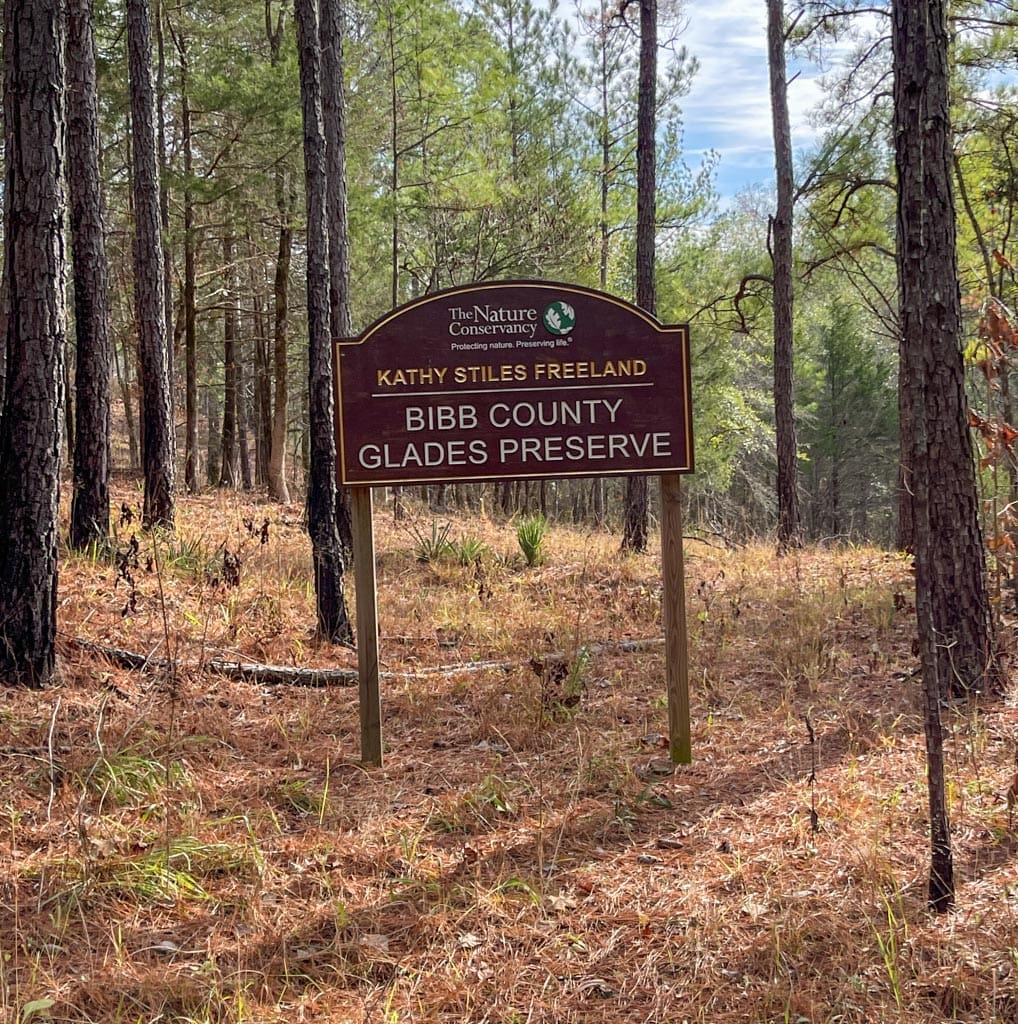
Going to the Glades was an easy drive from where I live in Columbiana. About 15 minutes past Montevallo, I arrived with my girlfriend, Lucy, and my roommate, Robbie. Whenever I go hiking or exploring I alway bring at least one person with me, and let someone who isn’t coming know where I’m headed and about how long I plan on being there. I recommend everyone do this as accidents can happen to even the most experienced outdoors people.

Since I’m making recommendations, I also recommend packing at least a few essentials no matter where you’re hiking. This can include some form of navigation, a light, sun protection, a first aid kit, a knife, fire starter, food and water. You may find yourself in a survival situation even when you’ve hiked a trail countless times. It’s always best to be prepared.
As you’re driving towards the Glades down Bulldog Bend Road/Bibb County Road 65, the side road that will take you to the gravel parking lot is easy to miss. It will come up quick, and blends in well as it’s just a dirt road with no markings. If you’re coming from Montevallo Road, the entrance will be on your left, whereas if you’re driving from Cahaba River Drive, it’ll be on your right.
I almost missed my turn when I first arrived, but as you drive down the dirt road you’ll get to a gravel lot with some wooden fencing and a vehicle gate. Past the vehicle gate is a sign that reads Kathy Stiles Freeland Bibb County Glades Preserve. The trail starts at this sign and will eventually take you to a fork with a smaller sign pointing towards the right. We followed the sign, but both paths take you to the same general area and form a small loop.
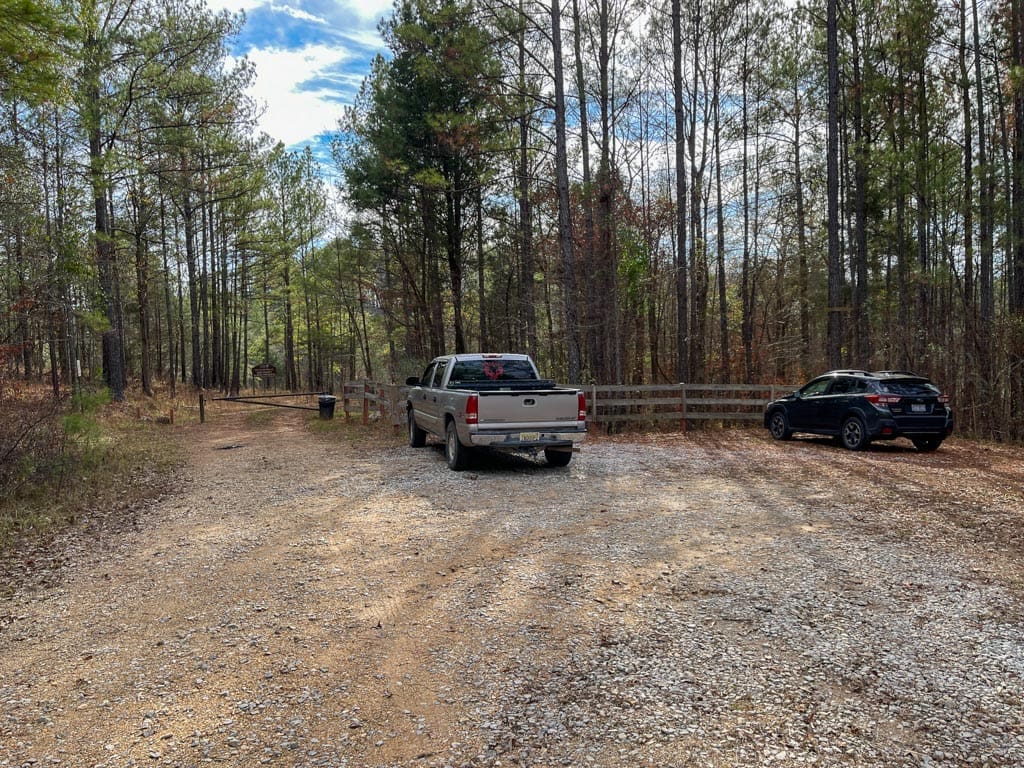

Your first stop will be a small boat landing for kayaks and canoes. There is an old, worn sign dedicating the landing to Carol Marie Reaves, “A teacher of environmental education and lover of the outdoors.” Lucy, Robbie and I tried to find more information on Reaves afterwards but we had no luck. If any readers know anything, I’d love to hear more.
After checking out the boat landing, which is really just a path to the water away from the shoals, you can turn back and continue on the trail until it brings you out to the main attraction of the preserve: the shoals and the glades.

Exploring the Glades
When we first arrived we spent some time hopping from rock to rock along the shoals, until we turned around and noticed that the shoals themselves seemed to climb up the hill that was behind us, forming the glades. We noticed that the hill seemed to have an open area at the top, so we decided to walk up it, having to use our hands to climb it a few feet, and found ourselves surrounded by short grasses and large trees.
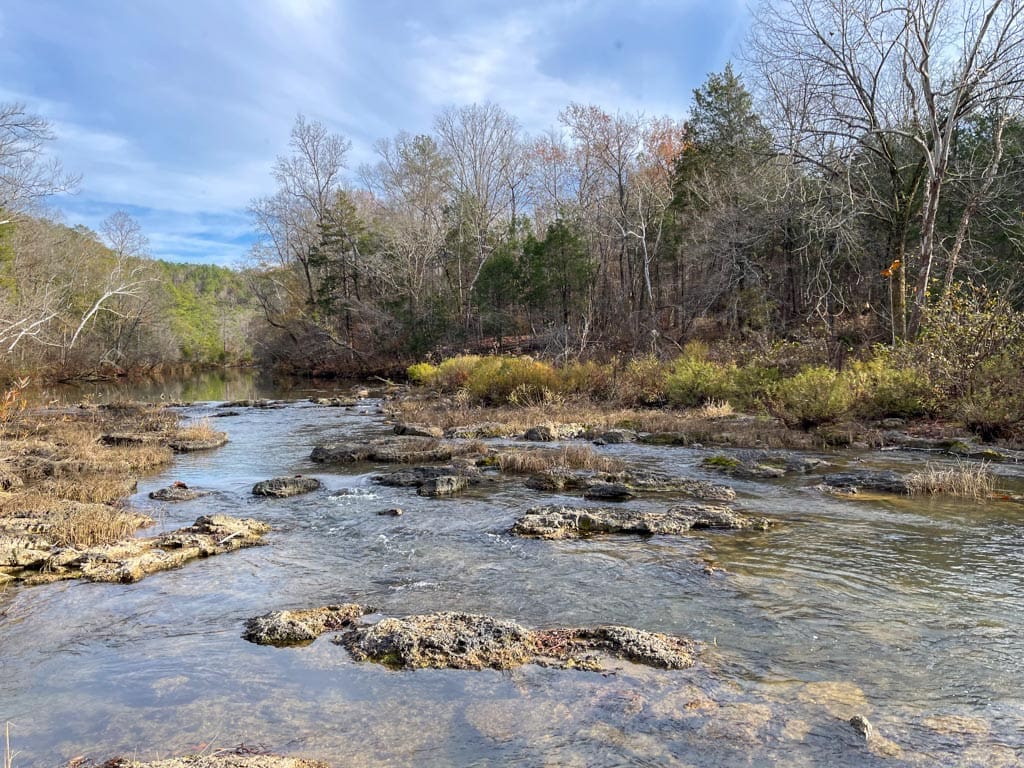
This is where I have to say, bring some hiking boots, or some kind of water proof boots. I had a much easier time climbing up the hill after being in the water than I would with tennis shoes. But, as is the case for most things outdoors, wear what’s comfortable for you.
Turning around, the view was spectacular. But what struck us the most was that we began to notice many of the trees around us were scorched. Their bark was black. Noticing what looked like a small campfire we thought maybe a fire got out of hand.
It wasn’t until Robbie pointed out the lack of an underbrush that we both realized that we were walking through a prescribed burn. We both got excited and at the end of our trip we confirmed that the Nature Conservancy performs prescribed burns to help manage the area.
Prescribed burns are one of my favorite topics to teach at the 4-H Center because many people don’t see purposefully burning our woods as a good thing. However, some plants and animals, like the longleaf pine tree, must be burnt to reproduce. Others, like different types of birds, rely on burns for easier prey.
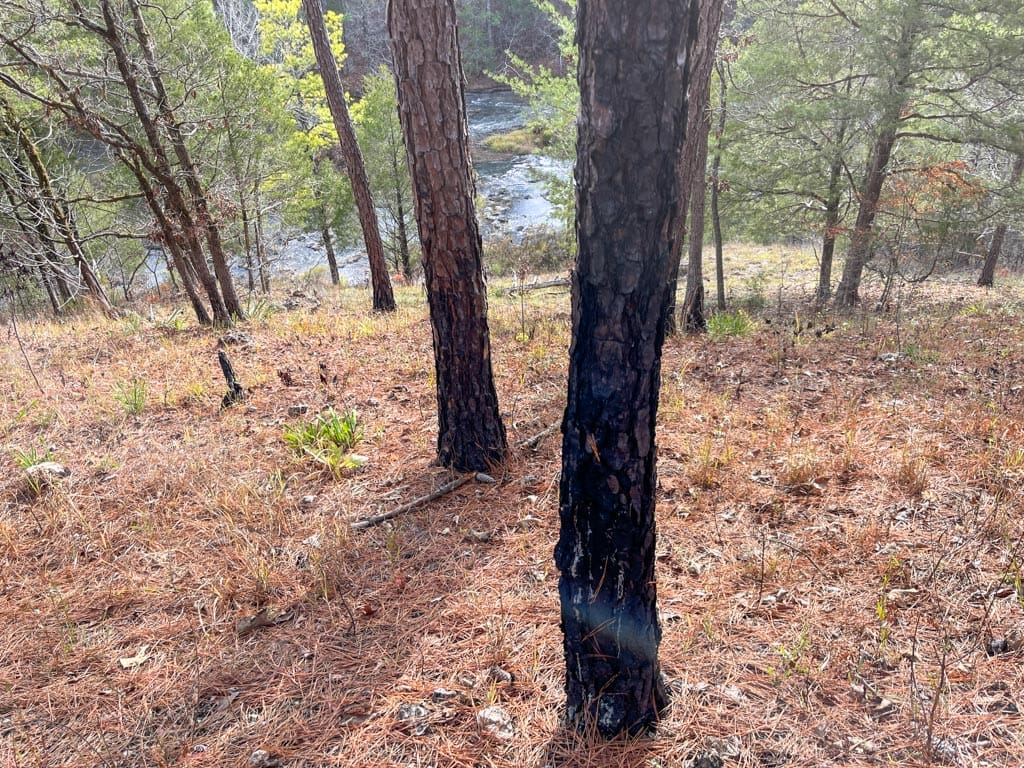
Eventually we came back down the hill and continued exploring the shoals. We found a small, lightly trekked fishing trail but it followed the river and didn’t lead to what we were hoping to find. According to the Nature Conservancy web page for the Glades, one of the earliest ironworks furnaces is located at this site. Named the Brighthope furnace, it’s supposedly near the banks of the river and remnants can still be found. Unfortunately, we were unable to find it.
Since we were running out of daylight we headed back towards my car when we spotted something bright orange on some leaf litter. We looked closer and although not a rare critter, it was a marbled orb weaver. They’re sometimes called the pumpkin spider as they have a bright orange body with black and white legs.
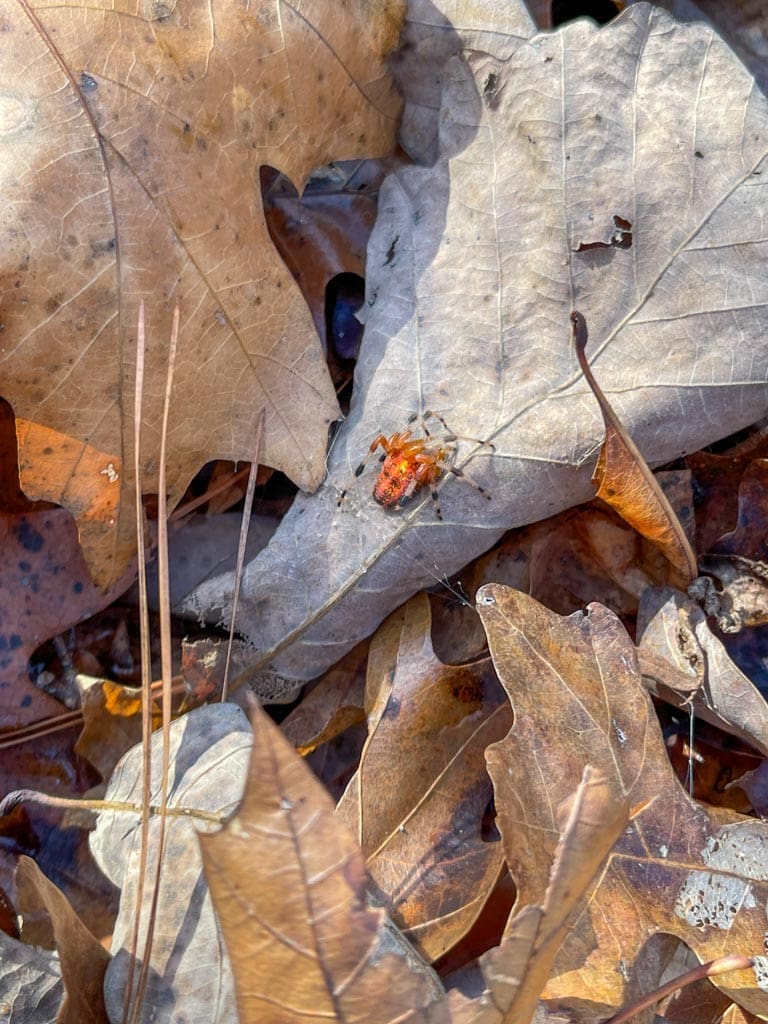
Originally we weren’t able to identify the orb weaver and after looking it up at home I stumbled upon another piece of biodiversity at the Glades. I found a Mississippi State Entomological Museum expedition report written by Joe MacGown. The report covered three separate expeditions detailing the groups trip and what was collected, but that’s not what piqued my interest.
When I found the report, I swore I recognized MacGown’s name. While I was sitting in my bed looking around my room reading his name it dawned on me. Sitting on my dresser, staring at me, was a surreal drawing of a person with blue anthropomorphized scribbly hair; it reminded me of my friend Wesley. But what was staring back at me was a piece of art I bought at the Kentuck Art Festival. And who had drawn it? MacGown’s son.
MacGown is not just an entomologist but an artist too. He and his son own an art studio in Mississippi, but also travel for art shows. The previous two years at Kentuck, I’ve spoken to them and bought some art, and now I have something else to talk to them about at the next Kentuck. Their art is chaotic surrealism and often features different insects and critters. You can find Joe MacGown’s website here.
It was a welcome find, and an unexpected personal connection. It makes me wonder how many other people have walked through the same woods that I have, and what they may be doing now or what they experienced in the places that I’ve found a personal solitude.
Overall, I would highly recommend this trip to anyone, and already have. I can’t believe I have lived in Alabama for almost five years and have only visited this place so recently. While I enjoyed the cooler weather and minimal humidity, I will be back in the spring to try to catch some blooming wildflowers and in the summer to find the Cahaba Water Lily.
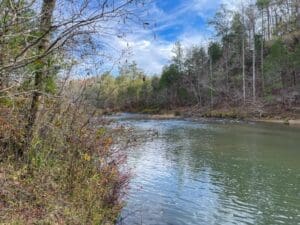


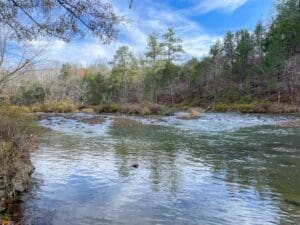

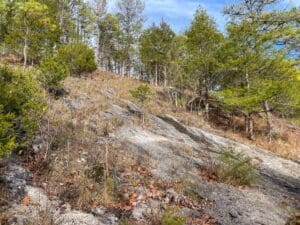


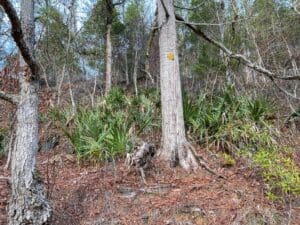
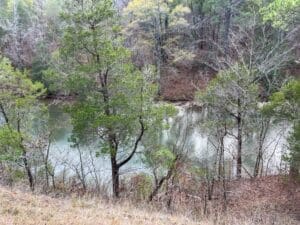
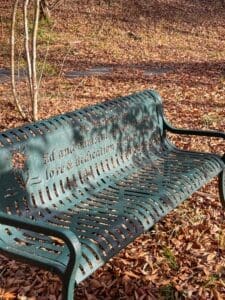
Want to get early access to columns, unique newsletters and help keep The Sunrise News active? Then support us on Ko-Fi!
This article represents the opinions of its author. The views expressed here are not necessarily representative of The Sunrise News staff as a whole.
